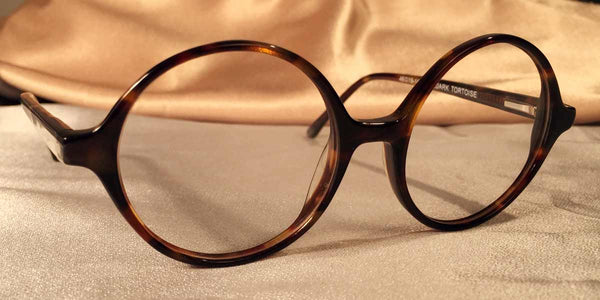Horn-Rimmed and Tortoise Shell: What's the difference?
May 15, 2018Our discerning customers often ask us what makes one set of eyeglasses "horn-rimmed" and another "tortoise shell". As you may have already guessed, the origins of both eyewear style names come from the organic materials originally used to make them: animal horns and shells. Prior to being used for eye frames, these materials were valued for centuries due to their unique decorative qualities and durability,. They were used in necklaces, brooches, buttons and other jewelry, and sometimes even on the handles of guns. As eyewear, they first came into use as an alternative to metal rims in the very late 1800's, and became widely popular when silent film comedian Harold Lloyd made his round rimmed frames a signature part of his comedic on-screen persona during the early 20th century.

Bicycles frames are an updated version of the frames Harold Lloyd made famous in his silent films.
Authentic tortoise shell and horn-rimmed glasses remained popular through the 1920s, but they proved to be prone to breaking, especially after being exposed to sunlight for extended periods. As plastics came into more common use in the 1940s and 50s, they supplanted tortoise shell as a more flexible and durable eyeglass frame, and the tortoise shell/horn-rim style exploded in popularity.
Though the names are generally synonymous and the materials -- often cellulose acetate -- used to produce them are the same, horn-rimmed glasses are generally thought of as having thicker rims and being in the beige, brown, umber or dark brown range, while tortoise shell frames are considered thinner and will often have a more colorful range and more varied patterns But over the years both horn rim and tortoise shell have been blended together, and have practically become synonymous.
Regardless of the style name, you'll fine plenty of beautiful horn-rimmed and tortoise shell frames in our collection.
